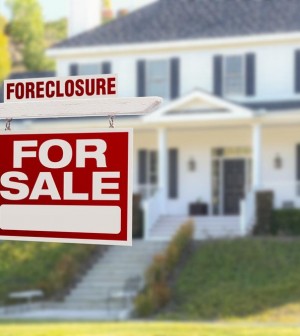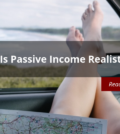- 4 Unexpected Things I’ve Learned From Buying My First Mobile Home Park
- How Ironic: America’s Rent-Controlled Cities Are Its Least Affordable
- U.S. homes are still a bargain on the international market
- Getting The Best Possible Quality Photos On MLSs and Syndicated Sites
- Home buyers in these markets have the upper hand
5 Steps To Successfully Buying Bank Owned Property

How do you buy bank owned foreclosure property?
How hard is it to buy bank owned homes? Why is it so attractive? What challenges have made it difficult for home buyers and real estate investors to purchase these properties in the past?
Buying a Bank Owned Property in 5 Easy Steps:
1. Find lenders with REO properties
2. Identify those which can, and are selling foreclosure homes
3. Get in touch with the right contact
4. Negotiate a great deal
5. Close the deal and get your keys
Sounds easy, right?
Unfortunately, while it sounds simple, it has still proven challenging for many buyers. So what struggles do real estate investors and home buyers face in this process? What are the solutions?
What is ‘Bank Owned Property’?
‘Bank owned property’ normally refers to residential homes and commercial real estate that a mortgage lender has repossessed. This frequently happens when a home or business property falls into foreclosure. When a borrower falls behind on mortgage payments, the property enters the foreclosure process. If not fixed in time, the property will be sent to foreclosure auction. If it is not sold at auction, the property becomes real estate owned (REO) by the lender. There are actually many other reasons that a home can fall into foreclosure. It isn’t just due to missed monthly mortgage payments. This can include:
Delinquent property taxes
Balloon mortgage balances that can’t be paid
HOA and condo dues and special assessments
Forced placed insurance fraud
Lender mistakes
While foreclosure auctions have generally become very busy, not all properties sell. In fact, quite a few do not. This can be due to auction rigging fraud, because the amount demanded is too high, or the property appears undesirable to those bidding. This has resulted in U.S. banks and credit unions being lumbered with tens of billions of dollars in REOs.
Why Buy Bank Owned Properties?
Bank owned homes have been in high demand with buyers. These foreclosure homes offer the promise of being great deals. However, that is not always the case.
The perception is that banks desperately need to get rid of these non-performing assets. In turn, they’ll sell them for pennies on the dollar to get rid of them fast. This has often been the case. But it isn’t always the rule. Despite how much lenders might like to sell distressed homes fast, and even be willing to do it cheap, there are challenges. These issues can include:
Title and legal issues which can prevent the sale
Accounting rules and a need to make the numbers
Logistical and staffing challenges
Greed
Unrealistic price and value opinions
Difficult selling process
Banks, credit unions, and government do sell off these properties. They often do it in a big way. Many buyers have found amazing discounts on bank REOs. But assuming you can walk in to your local bank branch and negotiate from a position of power isn’t always realistic. Rarely will they beg to sell you homes, even if it looks like they need to. Done well, buying bank owned homes can be incredibly profitable. Regular home buyers may find they can score a great deal on the home of their dreams. Real estate investors may be able to use this as a channel for buying distressed properties in bulk on a regular basis.
The Struggles of Buying Bank Owned Homes
Thousands of real estate investors and homebuyers have tried to buy bank owned homes. Thousands have given up. If it was super easy, there wouldn’t be any left. This doesn’t mean it isn’t profitable, but it does require understanding the struggles and solutions. Issues facing bank owned home buyers include:
Difficulty on performing due diligence upfront
Challenges in obtaining REO lists in bulk
Property condition
Difficult and lengthy negotiation processes
Difficulty in ‘qualifying’ as a desirable buyer to bank property sellers
Property condition can be tricky. Properties selling at $10,000 or $20,000 may appear to be a ‘no-brainer.’ However, if it needs to be torn down at a great cost, it may be less of a deal than it appears on the surface.
There are many foreclosure and REO properties listed by banks, and available through the MLS. There can be deals in this pool. But the most appealing discounts are normally found by going directly to banks to find off-market deals they aren’t advertising yet. This cuts out the competition. The key to success here is making the right bank contacts, and presenting a strong case for your offer to be accepted.
Summary
Bank owned properties can be very appealing. The mechanics of buying them isn’t too different from buying other homes. But there can be extra work and time involved in finding good off-market bank owned homes.




 100% Secure
100% Secure
You must be logged in to post a comment Login